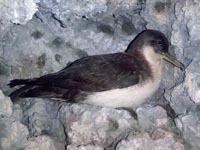THE WORLD BIRDS - An Online Bird Book
PROCELLARIIFORMES
Prions and Shearwaters
Order Procellariiformes Family Procellariidae
PROCELLARIIFORMES
Procellariiformes is an order of seabirds that comprises albatrosses, shearwaters, and various type of petrels. Wings are long and narrow; feet are webbed, and the hind toe is undeveloped or non-existent. Plumage is predominantly black, white and gray. They are almost exclusively pelagic (feeding in the open ocean). They distributed across the world's oceans, with the highest diversity being around New Zealand. Procellariiformes mostly nesting on remote predator-free islands. Only a single egg is laid per nesting attempt. The various species within the order have a variety of migration strategies. Many species undertake regular trans-equatorial migrations. However, no albatrosses cross the migrate across the equator because they rely on wind assisted flight.
The order has a few unifying characteristics, starting with their tubular nasal passages enclosed in one or two tubes on their straight, deeply grooved bills with hooked tips. These passages are used for smelling which helps to locate patchily distributed prey at sea and may also help locate their nests within nesting colonies. Also, they have a stomach oil stored that can be used as a food source during their long flights and also as a defense mechanism. All birds have an enlarged nasal gland at the base of the bill, above their eyes. This gland is inactive in species that don't require it; however the Procellariiformes do require its use due to their drinking of ocean water. It removes salt that forms a 5% saline solution that drips out of their nose or is forcibly ejected in some petrels. [abstracted from Wikipedia]
The order has a few unifying characteristics, starting with their tubular nasal passages enclosed in one or two tubes on their straight, deeply grooved bills with hooked tips. These passages are used for smelling which helps to locate patchily distributed prey at sea and may also help locate their nests within nesting colonies. Also, they have a stomach oil stored that can be used as a food source during their long flights and also as a defense mechanism. All birds have an enlarged nasal gland at the base of the bill, above their eyes. This gland is inactive in species that don't require it; however the Procellariiformes do require its use due to their drinking of ocean water. It removes salt that forms a 5% saline solution that drips out of their nose or is forcibly ejected in some petrels. [abstracted from Wikipedia]
Prions and Shearwaters
Order Procellariiformes Family Procellariidae
The procellariid family is usually broken up into four fairly distinct groups; the fulmarine petrels, the gadfly petrels, the prions, and the shearwaters. This web page contains the prions and the shearwaters.
Prions are small petrels. They are found in the Southern Ocean and breed on a number of subantarctic islands. Prions grow 20–27 cm long, and have blue-gray upper parts and white underparts. All prions are marine and feed on small crustacea and some small fish.
Shearwaters fly with stiff wings and use a “shearing” flight technique to move across wave fronts with the minimum of active flight. Many are long-distance migrants. They are also long-lived, some live to 50 years. Shearwaters come to islands and coastal cliffs only to breed. They are nocturnal at the colonial breeding sites, preferring moonless nights to minimize predation. They feed on fish, squid, and similar oceanic food.
Genus Ardenna
Shearwater, Buller's Ardenna bulleri Found: The Americas (Pacific Coast), Asia, Australasia
The Buller''s Shearwater has bluish-gray upperprats; gray on head down to eye level; white underparts.
Image by: 1) Tony_Morris - New Zealand 2, 3, 4) Aviceda - New Zealand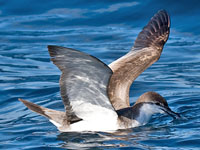
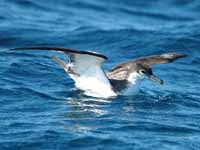
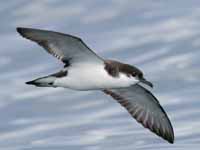
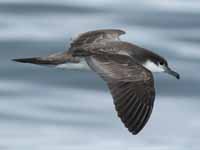
Shearwater, Flesh-footed Ardenna carneipes Found: North America (West coast), Asia, Africa, Australasia
Similar to: Pink-footed Shearwater. They look similar when seen from above. Easy to differentiate when seen from below because ot the Pink-footed Shearwater's white belly.
Image by: 1) Lee Gilbert 2) Duncan 3) Brian Gratwicke - New Zealand 4) patrick kavanagh - New South Wales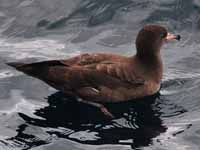
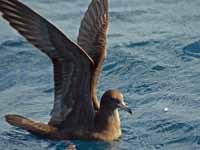
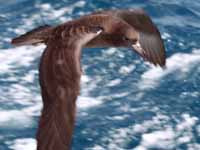
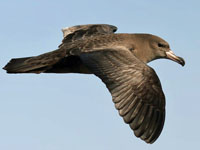
Shearwater. Great Ardenna gravis; Found: The Americas, Europe, Asia, Africa, Australasia
Similar to: Cory's Shearwater. Size of Cory's Shearwater and Great Shearwater are similar. Cory's Shearwater has brownish-grey upperparts and white underparts. Great Shearwater has dark upperparts, and underparts white except for a brown belly patch and dark shoulder markings.
Image by: 1, 2, 3, 4, 5, 6, 7, 8, 9, 10, 11, 12, 13) Dick Daniels - off Cape Hatteras, North Carolina at the Gulf Stream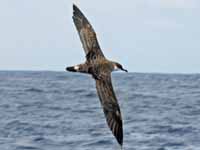

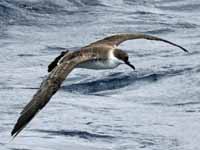
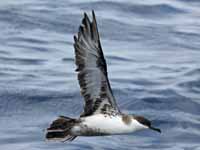
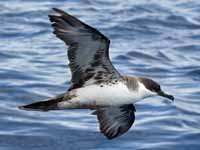
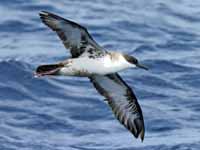

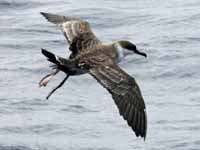
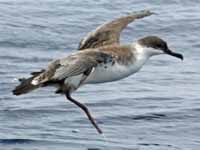
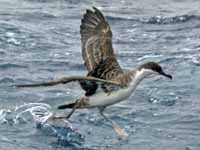
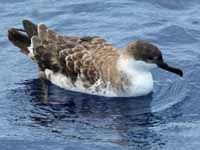
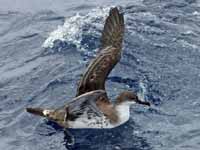
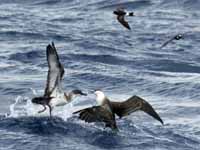
Shearwater, Pink-footed Ardenna creatopus Found: The Americas
Similar to: Flesh-footed Shearwater. They look similar when seen from above. Easy to differentiate when seen from below because ot the Pink-footed Shearwater's white belly.
Similar to: Black-vented Shearwater. The Black-vented Shearwater has a dark bill compared to pink for the Pink-footed. It is also much smaller than the Pink-footed Shearwater.
Image by: 1) Amy McAndrews - Mexico 2) Marc Dragiewicz 3) Jerry Oldenettel - California 4) Julio Mulero - California 5) Mike Baird - CaliforniaSimilar to: Black-vented Shearwater. The Black-vented Shearwater has a dark bill compared to pink for the Pink-footed. It is also much smaller than the Pink-footed Shearwater.
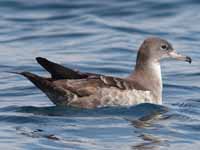

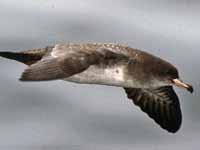
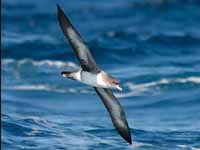
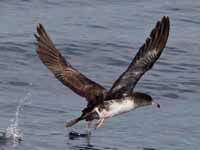
Shearwater, Short-tailed Ardenna tenuirostris Found: The Americas, Australia
Similar to: Sooty Shearwater, Wedge-tailed Shearwater
Image by: 1, 2) JJ Harrison - Tasmania, Australia 3) Bill Bouton - California 4) Mike Baird 1) Juvenile

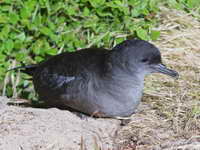

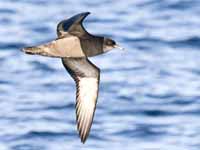
Shearwater, Sooty Ardenna grisea Found: The Americas, Europe, Asia, Africa, Australia
Similar to: Short-tailed, Wedge-tailed Shearwater
Image by: 1) Sabine's Sunbird - New Zealand 2) putneymark 3) seabamirum - off New Jersey coast 4) Nick Athanas - Faklands 5, 6, 7) Dick Daniels - Gulf Stream, North Carolina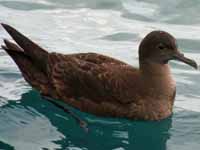
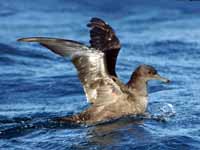

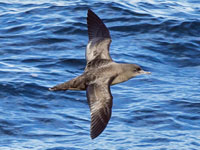

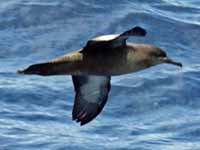
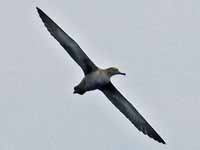
Shearwater, Wedge-tailed Ardenna pacifica Found: The Americas (west coast), Asia, Africa, Australia
Similar to: Short-tailed, Sooty Shearwater
Image by 1) Dominic Sherony - Oaxaca, Mexico 2) Angrysunbird 3) Dick Daniels- Kauai, Hawaii 4) Amy McAndrews - Mexico 5) Charlie Westerinen - east of Wollongong Australia1, 2, 3) Light morph 4) Intermediate morph
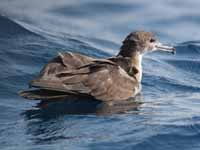
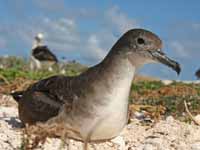
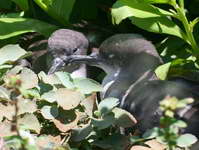
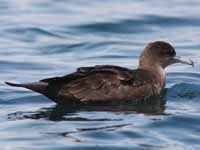
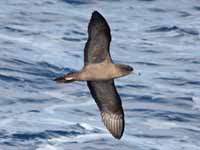
Genus Calonectris
This genus contains 3 large shearwaters.
Shearwater,_Cape_Verde Calonectris edwardsii Found: breeds off coast west Africa
Similar to: Cory's Shearwater. Cape Verde Shearwater has darker upperparts than Cory's Shearwater. Also, it has dark bill while Cory's has yellow bill.
Image by: 1) Graham_Ekins 2) Claudio_Timm 3, 4) Dominic_Mitchell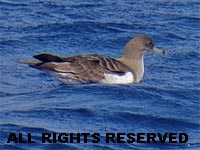
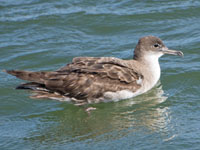
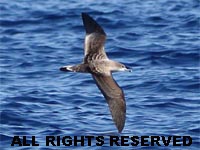
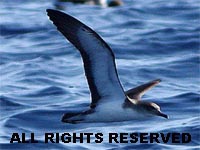
Shearwater, Cory's Calonectris borealis Found: Atlantic coasts of North America, South America, Europe, Africa
Similar to: Cape Verde Shearwater. Cape Verde Shearwater has darker upperparts than Cory's Shearwater. Also, it has dark bill while Cory's has yellow bill.
Similar to: Great Shearwater. Size of Cory's Shearwater and Great Shearwater are similar. Cory's Shearwater has brownish-grey upperparts and white underparts. Great Shearwater has dark upperparts, and underparts white except for a brown belly patch and dark shoulder markings.
Image by: 1, 2, 3) Dan Irizarry - off coast of North Carolina
4) Matrina Noite
5) Dick Daniels- off Cape Hatteras, North Carolina at the Gulf StreamSimilar to: Great Shearwater. Size of Cory's Shearwater and Great Shearwater are similar. Cory's Shearwater has brownish-grey upperparts and white underparts. Great Shearwater has dark upperparts, and underparts white except for a brown belly patch and dark shoulder markings.
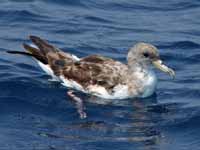
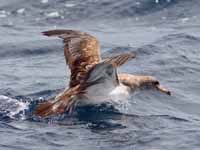
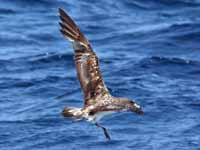
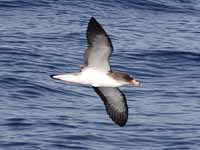
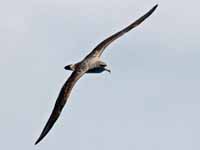
Shearwater,_Scopoli's Calonectris diomedea Found: Mediterranean, Atlantic
The Scopoli's Shearwater was formerly conspecific with the Cory's Shearwater.
Image by: 1) Telegro - Greece 2) Nik_Borrow - Spain
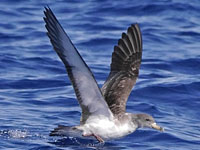
Shearwater,_Streaked Calonectris leucomelas Found: breeds Japan
Image by: 1) Kanachoro - Mikura Island 2) Tony_Morris - Japan
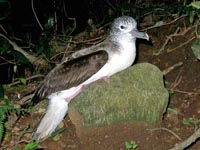
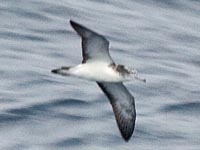
Genus Fulmarus
Fulmar, Northern Fulmarus glacialis Found: North America, Europe, Asia
Image by: 1, 2, 3 5, 6, 7) Dick Daniels - Scotland 4) Nik_Borrow - England 8) Jason Crotty - California
8) Darker morph
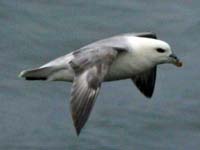
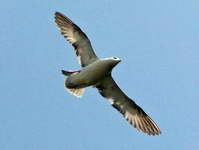
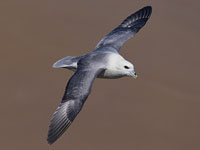

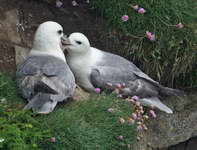
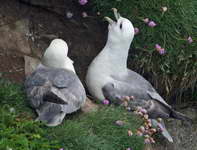
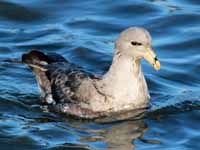
Fulmar,_Southern also Antarctic Fulmar Fulmarus glacialoides Found: Africa, Australia, New Zealand, and the Antarctic region
Image by: 1) Cristian_Pinto 2) Samuel_Blanc 3, 4, 5) Charlie Westerinen - Antarctica

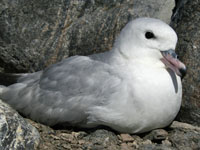
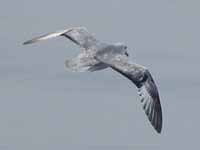
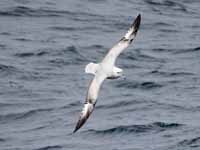
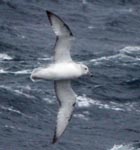
Genus Pachyptila
Prions are small petrels. They are found in the Southern Ocean and breed on a number of subantarctic islands. Prions grow 20–27 cm long, and have blue-gray upper parts and white underparts. All prions are marine and feed on small crustacea and some small fish.
Prion, Antarctic Pachyptila desolata Found: Africa, Asia, Australasia, South America, and the Antarctic region
Similar to: Sallvin's Prion. Salvin's Prion has wider bill than Antarctic Prion.
Image by: 1, 2) Liam Quinn - South Atlantic Ocean 3) Charlie Westerinen - North Shetland in the Drake Passage 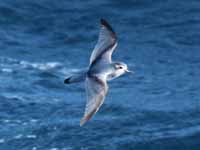
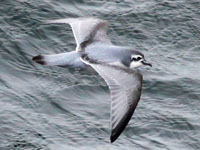
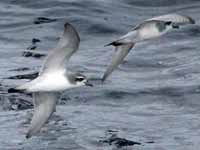
Prion,_Broad-billed Pachyptila vittata Found: Southern Hemisphere (Africa, Australasia, South America)
The Broad-billed Prion has blue-gray upperparts; white underparts; dark crown; dark eye-strpe; black-tipped tail; broad, flat tail.
Image by: 1) Nicolas_LeJeune 2) Rosemary_Tully
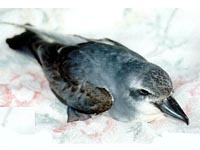
Prion, Fairy Pachyptila turtur Found: oceans and coastal areas in the Southern Hemisphere (including AF, AU, SA)
Image by: 1) Zoopro 2) Sabine's Sunbird - off Northland Coast, Hauraki Gulf, New Zealand 3) David Cook - Continental shelf, off Eden, NSW, Australia 4) Ed_Dunens - Victoria
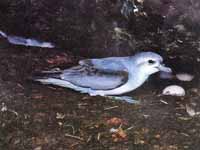
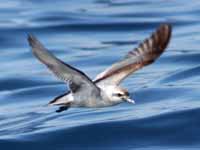
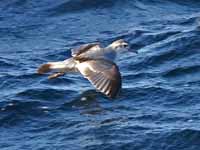
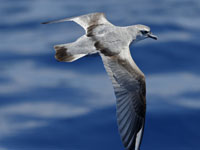
Prion,_Fulmar Pachyptila crassirostris Found: Africa, Australasia
Image by: 1) Paul_Sagar - Bounty Island, New Zealand 2) laikolosse
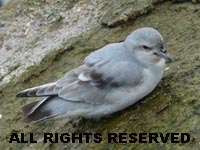
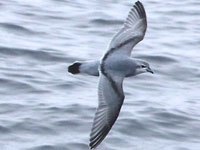
Prion,_Salvin's also Medium-billed Petrel Pachyptila salvini Found: Africa, Australasia, South America,
The Salvin's Prion has gray upperparts; darker eye-line; broad white supercilium; white underparts.
Similar to: Antarctic Prion. Salvin's Prion has wider bill than Antarctic Prion.
Image by: 1) ZooPro 2) DuncanSimilar to: Antarctic Prion. Salvin's Prion has wider bill than Antarctic Prion.
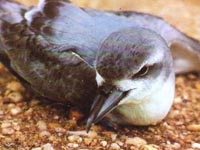
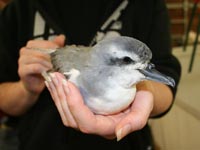
Prion, Slender-billed Pachyptila belcheri Found: Africa, Asia, Australia, South America
Image by: 1) Zoo_Pro 2, 3, 6) Charlie Westerinen - the Drakes Passage to Antarctica 4, 5) Nick Athanas - Falkland Islands
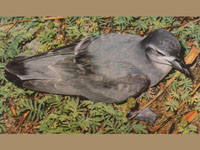
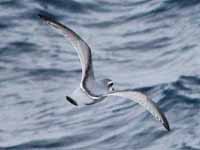
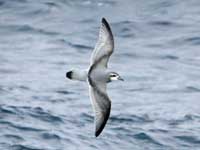
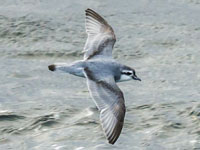
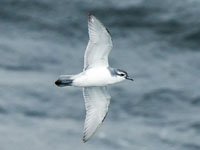
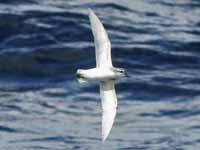
Genus Puffinus
The Puffinus name was originally chosen because these shearwaters were once thought to be related to puffins. They are small to medium sized.
Shearwater, Audubon's Puffinus lherminieri Found: The Americas (east coast), Africa, Asia. Australasia
Similar to: Manx Shearwater. Audubon's Shearwater and the Manx Shearwater are both small and white-bellied. Audubon's Shearwater has white in front of its eye, Manx Shearwater does not.
Similar to: Galapgos Shearwater. Until recently the Galapagos Shearwater was considered to be a subspecies of Audubon's Shearwater.
Image by: 1) Dan Irizarry off North Carolina coast 2, 3) Jason Forbes off New Jersey coast 4) Dominic Sherony 5) Dick Daniels - off Cape Hatteras, North Carolina at the Gulf StreamSimilar to: Galapgos Shearwater. Until recently the Galapagos Shearwater was considered to be a subspecies of Audubon's Shearwater.
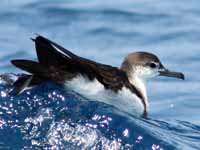
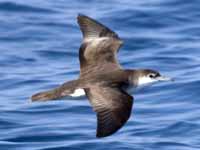
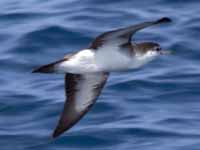

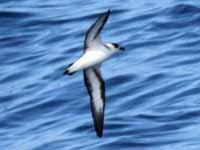
Shearwater,_Balearic Puffinus mauretanicus Found: breeds Balearic islands
Image by: 1) Marcabrera 2) Muchaxo 3) Jofre_Ferrer - Spain
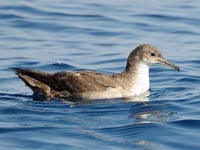
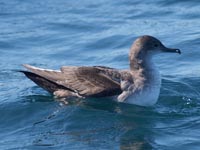
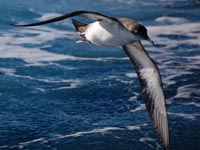
Shearwater,_Barolo Puffinus baroli Found: breeds Azores, Canaries:
The Barolo Shearwater has dark upperparts; white face, underparts; blue feet.
Image by: 1) Luis_Ferreira 2) Joao_Quaresma
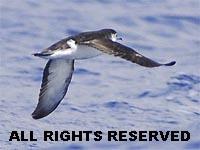
Shearwater, Black-vented Puffinus opisthomelas Found: North America (West coast)
Similar to: Pink-footed Shearwater. The Black-vented Shearwater has a dark bill compared to pink for the Pink-footed. It is also much smaller than the Pink-footed Shearwater.
Similar to: Manx Shearwater. Ranges usually don't overlap. Manx Shearwater has sharper facial features.
Image by: 1) Blake_Matheson - Montery Bay 2) Amy McAndrews - Mexico 3) Jerry_Oldenettel - CaliforniaSimilar to: Manx Shearwater. Ranges usually don't overlap. Manx Shearwater has sharper facial features.
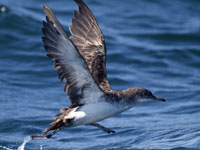

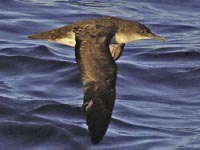
Shearwater,_Boyd's Puffinus boydi Found: breeds Cape Verde archipelago of the Atlantic Ocean
Image by: 1, 2) Dominic_Mitchell
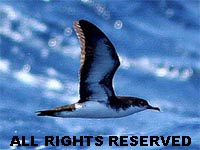
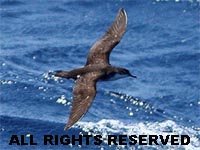
Shearwater,_Bryan's Puffinus bryani Found: around Hawaiin Islands
Image by: 1) hbw.com

Shearwater,_Christmas Puffinus nativitatis Found: tropical Central Pacific
Image by: 1, 2) Duncan - Tern Island of Hawaian Islands 3) Forest_n_Kim_Starr - Midway Atoll
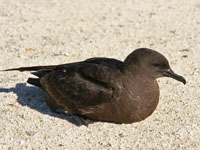
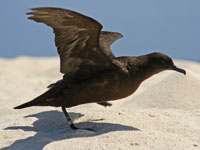
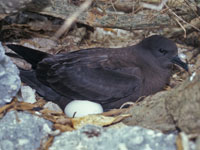
Shearwater,_Fluttering Puffinus gavia Found: New Zealand, Solomon Islands
Image by: 1) JJ_Harrison - Tasmania 2) Duncan
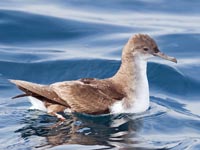

Shearwater, Galapagos Puffinus subalaris Found: Galapagos Islands and ranging to coastal South America
Similar to: Audubon's Shearwater. Until recently the Galapagos Shearwater was considered to be a subspecies of Audubon's Shearwater.
Image by: 1) Dominic Sherony - Guatemala 2, 3) Amy McAndrews - Mexico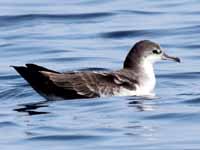
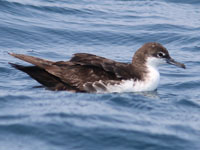
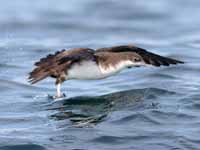
Shearwater,_Heinroth's Puffinus heinrothi Found: near Solomon Islands
Image by: 1) James_Eaton - Indonesia
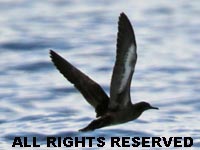
Shearwater,_Hutton's Puffinus huttoni Breeds: New Zealand:
The Hutton's Shearwater has dark brown upperparts, head, neck; white underparts; dark gray bill; dark gray "armpits"
Image by: 1) New_Zealand_Department_Conservation 2) Francesco_Veronesi 3) Duncan_Wright 4) Ben
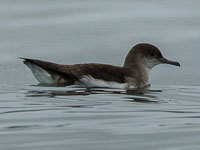
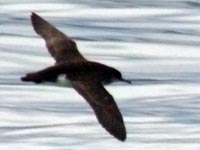
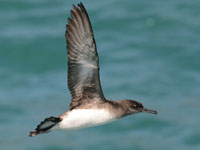
Shearwater,_Little Puffinus assimilis Found: throughout the oceans south of the Tropic of Capricorn.
Image by: 1) John_Gerrard_Keulemans
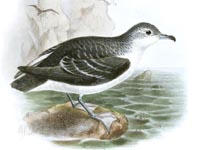
Shearwater, Manx Puffinus puffinus Found: The Americas, Europe, Africa, Australasia
Similar to: Audubon's Shearwater. Audubon's Shearwater and the Manx Shearwater are both small and white-bellied. Audubon's Shearwater has white in front of its eye, Manx Shearwater does not.
Similar to: Black-vented Shearwater. Ranges usually don't overlap. Manx Shearwater has sharper facial features.
Image by: 1) oskaree - Iceland 2, 4) Bill Bouton - California 3) Mike Baird - California Similar to: Black-vented Shearwater. Ranges usually don't overlap. Manx Shearwater has sharper facial features.
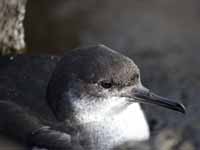
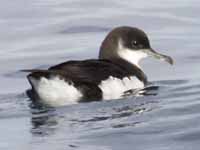
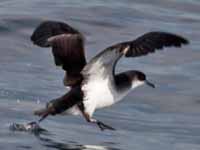
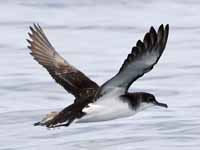
Shearwater,_Newell's Puffinus newelli Found: Hawaiian Islands vicinity
The Newell's Shearwater has black upperparts, head, nape; white throat, underparts; dark gray bill; pink legs.
Image by: 1) gunnlaugursig 2) Jim_Denny1) Juvenile

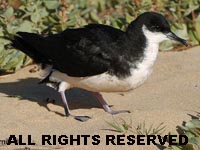
Shearwater,_Persian Puffinus persicus Found: Africa, Asia
Image by: 1) Keith_Wilson
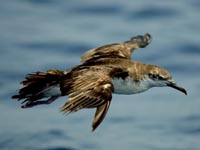
Shearwater,_Rapa Puffinus myrtae Found: breeds French Polynesia
Image by: 1) RV_Birdman
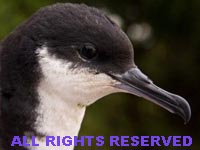
Shearwater,_Townsend's Puffinus auricularis Found: breeds: Mexico
Image by: 1) Don_Faulkner - off Argentina

Shearwater,_Tropical Puffinus bailloni Found: Indian Ocean and tropical Pacific Ocean
Image by: 1) Kinlarak - Reunion Island 2) Tim_Stenton - Maldives

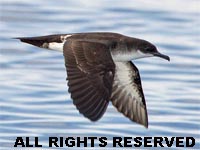
Shearwater,_Yelkouan Puffinus yelkouan Found: breeds around Mediterranean.:
The Yelkouan Shearwater has dark brown upperparts, head; white underparts
Image by: 1) Emoke_Denes - Malta